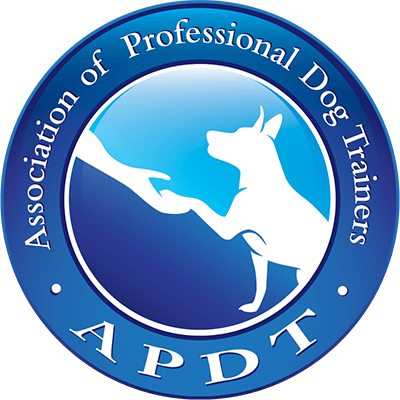
Why is Dog Training so Complicated?
Combining the science and the art that is training dogs.
The Science
By nature, when adding positive reinforcement to a situation, we are looking for the frequency of that behavior to increase. If you have worked with me before, you may have heard me say ‘think about the behavior that we want to strengthen, and reinforce it when you see it’. You may have also been asked to put aside a handful of your dog’s morning kibble so that you can sprinkle a few pieces between their front feet each time you find them making a good choice around the house. This is because we are looking to build reinforcement histories for behaviors that we want to increase in frequency – things like laying quietly in their beds, opting to sit at the door instead of rushing out, ignoring the mailman etc..
In order to reinforce accurately, we first need to have observation skills that go beyond just staring at your dog and waiting for a big clear sign that they are ‘getting it’. When working with reactivity for example, your dog’s ear may flick toward the sound of another dog but they choose not to turn their heads and escalate by staring at the dog – reinforce that! When adding distance to your stay behavior, you notice them lift a front paw when you reach 20 feet in but decides against moving and stays put – reinforce that choice! That ear flick, that paw raise, they are indicators of choices your dog is making, and it is so important to be totally in tune with them in order to first observe, then reinforce.
Then there is marker timing, which I find pet parents struggle with the most. It is important when marking a behavior that we hit just the right moment – not too soon before they make the right choice, and not too long after. When the reactive dog’s ear flicks back and then forward to refocus on you, mark and reward. You are saying, ‘Yes! I love that we are together on this!’ But if you miss that return of focus from your reactive pup because you did not observe their ear turn, that dog may very well go ‘Well, I tried my best, time to turn around and bark at that dog!’. If you miss that marker moment, your dog will then become unsure of what behavior to practice the next time. If you mark too soon, you are simply marking your dog for looking at you (nothing wrong with that in my book, but also not what you may be looking for in that moment) and if you mark too late, you may accidentally end up marking your dog for turning and reacting. Timing is everything!
Then there is reinforcement delivery – putting a treat directly into your dog’s mouth, delivering to the ground, to a target, tossing it to them… all of these different ways of delivering a reinforcer can also impact behavior. It is also important to consider the type of reinforcer you are using. You could use toys, praise, freedom, food etc., and what you use is really up to your learner. You will know what type of reinforcer to use and where/how to deliver it based on whether or not you see an increase in frequency of the desired behavior as a result of this reinforcer. Does your dog disengage from another dog more often when you reinforce with a food reward to the ground, or to their mouth? Does your dog repeat this behavior more often when you present them with a game of tug versus offering praise?
Then you also have to consider the antecedents of the behavior, and whether or not those can be changed. Oh, and don’t forget all of the variables in the environment. Also, how about we consider our learner – their genetics, their early learning experiences, the reinforcement histories they have built up for various behaviors on their own? Can’t forget the 3 D’s – distance, duration and distraction – that impact behavior. Did I mention how perfectly accurate your timing needs to be? Truly, I could write about each detail that impacts dog training and how successful your learner will be for ages and still not cover it all, in part because I am still learning myself! But, you get the picture. There are a LOT of variables to consider when looking at dog training from a scientific point of view.
The Art
And then there is the art of dog training. These variables are much harder to put into words, but they are equally as important. While balancing all of the scientific elements, we also balance emotion on both ends of the leash. As a handler and teacher, it is important to have empathy for your learner, to put yourself in their position and ask yourself – am I being clear? Is the environment set up so that my learner can be successful? Does my learner feel good right now? Are there things I can be doing better to make this process as smooth as possible?
The dance looks like having enthusiasm in the right moments, and being calm in others. Being mindful about things like generosity, kindness, patience, clarity. Choosing the right moment to deliver a jackpot. Feeling what your dog is feeling in order to understand their choices. Connecting with your learner to help them feel empowered, as opposed to disconnecting and letting them figure things out on their own. Leaning on your bond with your dog to support the science behind learning. Asking your dog questions such as how do you feel? Does this seem right to you? Do you need a break? Is there anything I can do better? What do you need from me? And when I say asking them questions, I don’t mean literally. Instead, you can let these questions run through your mind as considerations for change or improvement.
It is also important to remember to have fun, even when working through serious behavioral challenges. Fun will keep your dog engaged, looking forward to training. Sometimes, working through aggression or reactivity can be a huge emotional challenge for your dog, similar to going to therapy for people. If we can keep those experiences as light, fun and sweet as possible, your dog will no longer learn to dread them. Instead, they will be excited to do the fun thing where the two of you connect over something really hard for them, and grow stronger because of it. I think that is called love. 🙂
I wish I could do a better job of putting into words what the art of training a dog is all about. What I will say is, if you want to appreciate the art, you have to be willing to be humbled first. You have to be willing to put frustration, embarrassment, stress, negativity and disconnect behind you and push yourself to really have compassion and to desire a stronger bond between you and your dog. It isn’t easy, and some days are better than others. But, if you want to see true behavior change, combining the science and the art that is teaching an animal is the only way.






